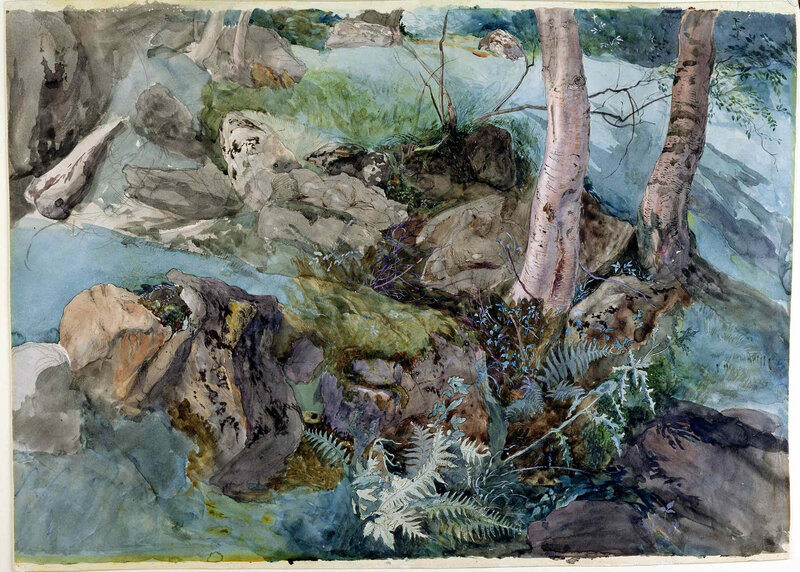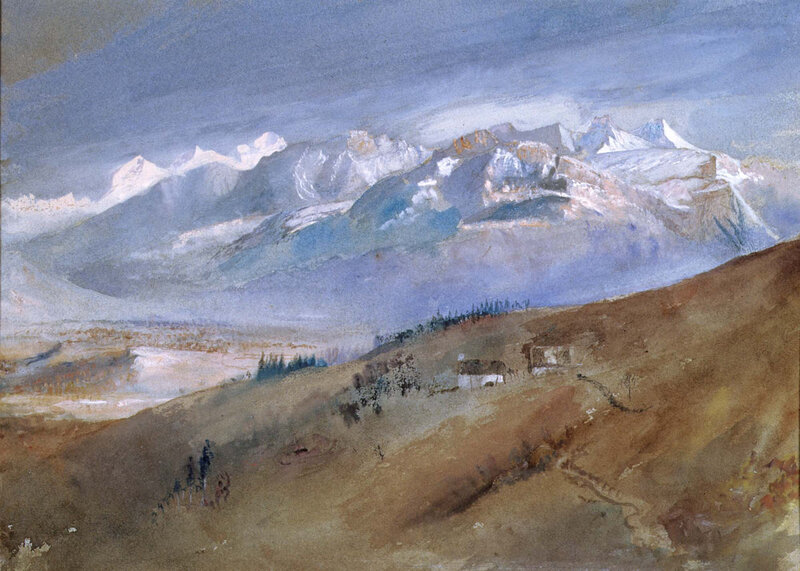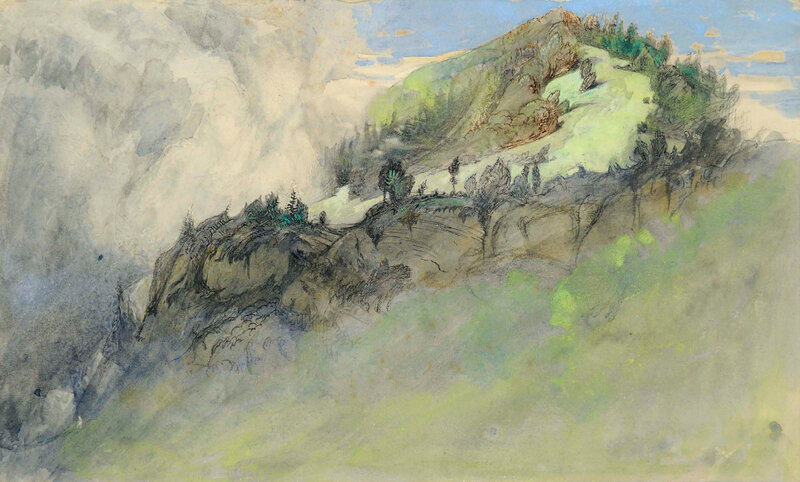See Ruskin masterpieces in Cumbria: His home and inspiration
KENDAL.- Abbot Hall Art Gallery will stage one of its biggest ever exhibitions this month: Ruskin, Turner & the Storm Cloud. The exhibition opens on 12 July and runs until 5 October 2019. It will include more than 135 works and stretch across six galleries. It takes place during the 200th anniversary year of John Ruskin’s birth (8 February 1819).
Helen Watson, Lakeland Arts’ Director of Programming, said: “Ruskin, Turner & the Storm Cloud will be one of our biggest ever shows. This year is hugely significant in celebrating Ruskin and we are delighted to have this landmark exhibition at Abbot Hall during the 200th anniversary of his birth. It’s particularly apt that the exhibition takes place in Cumbria - the home of Ruskin and the place he found most inspiration.”
John Ruskin (1819-1900) was the leading English art historian of the Victorian era, as well as an art patron, draughtsman, watercolourist, prominent social thinker and philanthropist. Born in London, he moved to Cumbria and its dramatic landscape became one of his biggest inspirations.
JMW Turner (1775-1881) was a landscape painter, traveller, poet and teacher. Many people consider him the first modern painter. Ruskin said of Turner he was ‘the greatest of the age’.
Ruskin, Turner & the Storm Cloud examines Ruskin’s relationship with Turner’s work and the impact Ruskin had in highlighting climate change.
Abbot Hall is partnering with York Art Gallery and University of York on this exhibition. Works from both Abbot Hall and York Art Gallery go on show alongside substantial loans from national and regional collections.
This exhibition was first shown at York Art Gallery from March to June this year and was a massive draw for visitors.
Abbot Hall and York Art Gallery commissioned new work by contemporary artist Royal Academician Emma Stibbon as part of the show.
Stibbon has created a series of large monochrome drawings inspired by Ruskin’s and Turner’s visits to the Alps. She retraced their steps to see for herself how the Alps have been impacted by climate change.
She has produced stunning large scale pencil drawings and cyanotype photographs that show how our natural environment is being destroyed.
The exhibition features watercolours, drawings and a portrait of Ruskin from the National Portrait Gallery, made in the aftermath of his first serious mental illness.
In 1884 Ruskin wrote about an encroaching “Storm Cloud” - a darkening of the skies that he attributed to the belching chimneys of the modern world. The imagery also allowed him to articulate his ongoing mental struggles.
John Ruskin (1819-1900), Dawn Coniston, 1873. Watercolour over pencil. Acquired with-the support of a VA Purchase Grant and the Friends of Abbot Hall. © Abbot Hall Art Gallery Kendal Cumbria.
Ruskin’s anxiety about darkening skies and polluted storm clouds is contrasted with his early interest in Turner’s luminous pictures.
The exhibition contains a substantial display of Turner’s watercolours, demonstrating his evolving style, and his creation of highly-finished sample studies of British and alpine landscapes.
Abbot Hall’s The Passage of Mount St Gothard (1804) by Turner will be a key painting on show.
JMW Turner (1775-1851), The Passage of Mount St Gothard, Taken from the Centre of the Teufels Broch (Devil’s Bridge), 1804, watercolour © Lakeland Arts Trust.
Cultural organisations in Cumbria including Ruskin Museum and Brantwood in Coniston will also be marking the anniversary of Ruskin’s birth with a series of exhibitions and events in 2019, making the county the place to visit for everything Ruskin related.
The Ruskin Museum holds the most comprehensive display in the Lake District about the life and work of John Ruskin. Brantwood is Ruskin’s former home where he spent the last 28 years of his life.
The exhibition has an accompanying publication, bringing together a collection of new essays by artists, climate change specialists, art historians and curators.
John Ruskin (1819-1900), Study of rocks and ferns in a wood at Crossmount, Perthshire, 1843,watercolour © Abbot Hall Art Gallery
JMW Turner (1775-1851), Lake Constance, 1842, watercolour © York Museums Trust (York Art Gallery).
John Ruskin (1819-1900), View from my Window at Mornex where I stayed a year, 1862, watercolour © Abbot Hall Art Gallery, Kendal, Cumbria, UK/ The Bridgeman Art Library.
JMW Turner (1775-1851), Fountains Abbey, exhibited 1798, watercolour © York Museums Trust (York Art Gallery).
John Ruskin (1819-1900), ‘Near Interlaken’, 1870, watercolour. © Lakeland Arts
John Ruskin (1819-1900), Rocks and vegetation at Chamouni, 1854, gouache on paper © Abbot Hall Art Gallery, Kendal
Emma Stibbon, Aiguilles, 2018. Picture courtesy of Alan Cristea Gallery

/https%3A%2F%2Fprofilepics.canalblog.com%2Fprofilepics%2F1%2F0%2F100183.jpg)
/https%3A%2F%2Fstorage.canalblog.com%2F03%2F02%2F119589%2F96711876_o.jpg)
/https%3A%2F%2Fstorage.canalblog.com%2F11%2F31%2F119589%2F94773502_o.jpg)
/https%3A%2F%2Fstorage.canalblog.com%2F20%2F83%2F119589%2F94772815_o.jpg)
/https%3A%2F%2Fstorage.canalblog.com%2F26%2F72%2F119589%2F75604929_o.jpg)
/https%3A%2F%2Fstorage.canalblog.com%2F59%2F60%2F119589%2F26458628_o.jpg)












/http%3A%2F%2Fstorage.canalblog.com%2F17%2F75%2F119589%2F70967527_o.jpg)
/http%3A%2F%2Fstorage.canalblog.com%2F53%2F21%2F577050%2F38530108_p.jpg)
/http%3A%2F%2Fstorage.canalblog.com%2F84%2F73%2F119589%2F128782095_o.jpeg)
/http%3A%2F%2Fstorage.canalblog.com%2F03%2F16%2F119589%2F120407342_o.jpg)